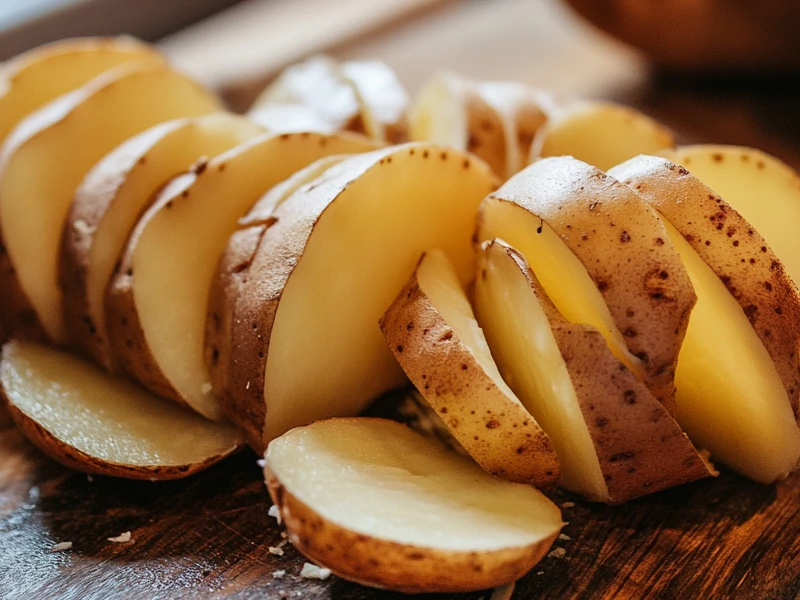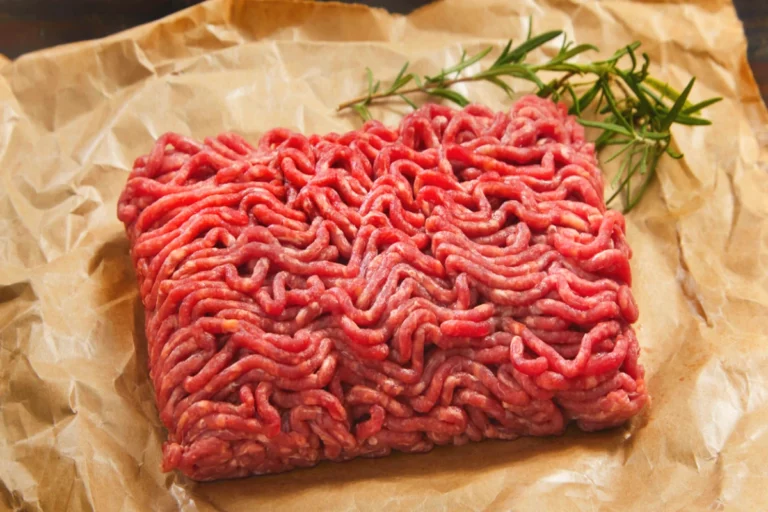Everyone Makes These Same Mistakes When Slicing Potatoes
Slicing potatoes seems like one of the simplest tasks in the kitchen. After all, what could go wrong with cutting a vegetable? Well, quite a lot, as it turns out. From uneven cooking to wasted potato flesh and even accidents, many of us are guilty of committing the same mistakes over and over. But fear…

Slicing potatoes seems like one of the simplest tasks in the kitchen. After all, what could go wrong with cutting a vegetable? Well, quite a lot, as it turns out. From uneven cooking to wasted potato flesh and even accidents, many of us are guilty of committing the same mistakes over and over. But fear not! Whether you’re making fries, mashed potatoes, or potato skins, knowing what not to do can save you time, effort, and frustration.

Using the Wrong Cutting Motion
Why an Up-and-Down Motion Doesn’t Work
One of the most common slicing errors is using an up-and-down motion with your knife. While this technique may work for softer vegetables, potatoes are denser and stickier. This repetitive motion increases friction, causing potato slices to cling to your knife, slowing you down and creating uneven cuts.
Worse yet, it can lead to wasted potato flesh because those pesky, sticky bits tend to tear rather than slice cleanly.
The Right Technique for Smoother Slices
To master the art of slicing potatoes, try using a horizontal slicing motion instead. Glide the knife through the potato in a smooth, steady motion. This reduces friction, prevents the potato from sticking to the blade, and allows for more precise cuts.
Pro tip: Use a sharp, well-maintained knife to make your work easier. A dull blade is your enemy, especially when working with dense vegetables like potatoes.
Skipping a Stable Base
The Problem with Round Potatoes
Potatoes are naturally lumpy and uneven, which can make them a nightmare to slice. Without a stable base, they tend to roll around on the cutting board. This not only slows you down but also increases the risk of a knife slipping and causing an injury.
How to Create a Stable Base
The solution is simple but often overlooked: trim a small slice off one side of the potato to create a flat, stable base. Place the potato flat-side-down on the cutting board before proceeding with slicing.
This technique works wonders for achieving clean, even cuts, particularly when making fries or wedges. It also keeps your fingers safe, so it’s a win-win!
Slicing Potatoes Too Small for Boiling
Overcooking and Water Absorption
When making mashed potatoes, it might seem logical to chop them into small chunks to speed up the boiling process. Unfortunately, smaller pieces absorb more water during cooking, leading to soggy, waterlogged potatoes.
This results in watery, gluey mashed potatoes that don’t absorb butter or cream as they should. Plus, overcooked potatoes can break down too much, leaving you with a starchy mess instead of the creamy mash you’re aiming for.
Ideal Size for Boiling Potatoes
For the perfect mash, cut your potatoes into evenly-sized chunks, about 2 inches across. This size allows them to cook quickly without soaking up excessive water. Be consistent with your cuts to ensure all pieces boil at the same rate, avoiding undercooked lumps in your mash.
Uneven Wedges or Fries
Why Uniformity Matters
We’ve all been there—your potato wedges come out of the oven with some pieces perfectly crispy while others are undercooked. This happens because of uneven slicing. Irregular shapes cook at different rates, which can ruin an otherwise delicious dish.
Step-by-Step Guide to Cutting Even Wedges
To achieve evenly cooked wedges:
- Start by halving the potato lengthwise.
- Lay each half flat on the cutting board, then cut them into quarters.
- Continue halving each piece until all your wedges are of equal size.
Discard any oddly shaped pieces or save them for soups or stews. Consistency is key for perfectly roasted wedges every time.
Incorrect Cuts for Specific Dishes
Loaded Potato Skins
Most people slice their potatoes lengthwise when making loaded potato skins. While this might seem intuitive, it limits the amount of stuffing you can add.
Instead, cut your potatoes widthwise. This method creates smaller, deeper skins that hold more toppings, making them perfect for parties and gatherings. Bonus: they’re easier to eat, too!
Hasselback Potatoes
Hasselback potatoes are a showstopper, but they can be tricky to slice. Cutting too deep can cause the potato to fall apart, while uneven slices ruin the aesthetic.
To avoid this, place chopsticks on either side of the potato as you slice. The chopsticks act as a guide, ensuring you don’t cut all the way through. You’ll achieve perfectly uniform slices every time.

Ignoring Proper Tools
The Right Knife for Potatoes
Not all knives are created equal, and your trusty butter knife isn’t going to cut it here. For potatoes, a sharp chef’s knife or a dimpled blade is ideal. Dimples reduce surface tension, preventing potato slices from sticking to the blade.
Why Mandolines Are Essential
For ultra-thin slices (like those needed for scalloped potatoes or gratins), a mandoline is your best friend. This handy tool ensures uniform slices in seconds, saving you time and effort. Just be sure to use the safety guard to protect your fingers.
Forgetting to Score Roasted Potatoes
The Importance of Scoring
Scoring your potatoes before roasting increases their surface area, allowing for maximum crispiness. Use a sharp knife to create shallow, crisscross patterns across the surface.
Enhancing Surface Area for Roasting
These ridges and grooves not only look appealing but also let oil and seasoning penetrate deeper, giving you perfectly golden, crispy roasted potatoes.
Precutting Potatoes Too Early
Oxidation Problems
Slicing your potatoes hours before cooking might seem like a time-saver, but exposure to air causes them to oxidize and turn brown.
Risks of Over-Soaking in Water
While soaking can prevent browning, it also leaches starch from the potatoes, leading to a loss of fluffiness. For best results, slice your potatoes right before cooking.
Cutting on a Slippery Surface
Why Stability Matters
Slippery cutting boards or potatoes that slide around can lead to uneven cuts or accidents.
How to Fix a Slippery Setup
Place a damp kitchen towel or paper towel under your cutting board to create friction. Alternatively, use a ridged board for added grip.
Overlooking Techniques for Specialty Cuts
Crinkle-Cut Fries
Crinkle knives are the only way to achieve perfect ridges. Regular knives simply won’t cut it (pun intended).
Tearing vs. Slicing for Roast Potatoes
For extra-crispy roast potatoes, skip the knife and tear your parboiled potatoes by hand. The jagged edges crisp up beautifully in the oven.
Conclusion
Slicing potatoes doesn’t have to be a frustrating ordeal. By avoiding these common mistakes and applying the right techniques, you’ll not only save time but also elevate your dishes to the next level. Happy slicing!
FAQs
1. What’s the best knife for slicing potatoes?
A sharp chef’s knife or a dimpled blade is ideal for clean, even cuts.
2. How can I prevent my potatoes from browning after cutting?
Use them immediately or submerge them in cold water for short periods.
3. Do I really need a mandoline for thin slices?
Yes, a mandoline ensures precision and consistency for dishes like gratins or chips.
4. What’s the ideal size for mashed potato chunks?
Chunks should be around 2 inches across for even cooking without waterlogging.
5. Are crinkle cutters worth buying for fries?
Absolutely! Crinkle cutters give you perfect ridges that knives can’t achieve.




